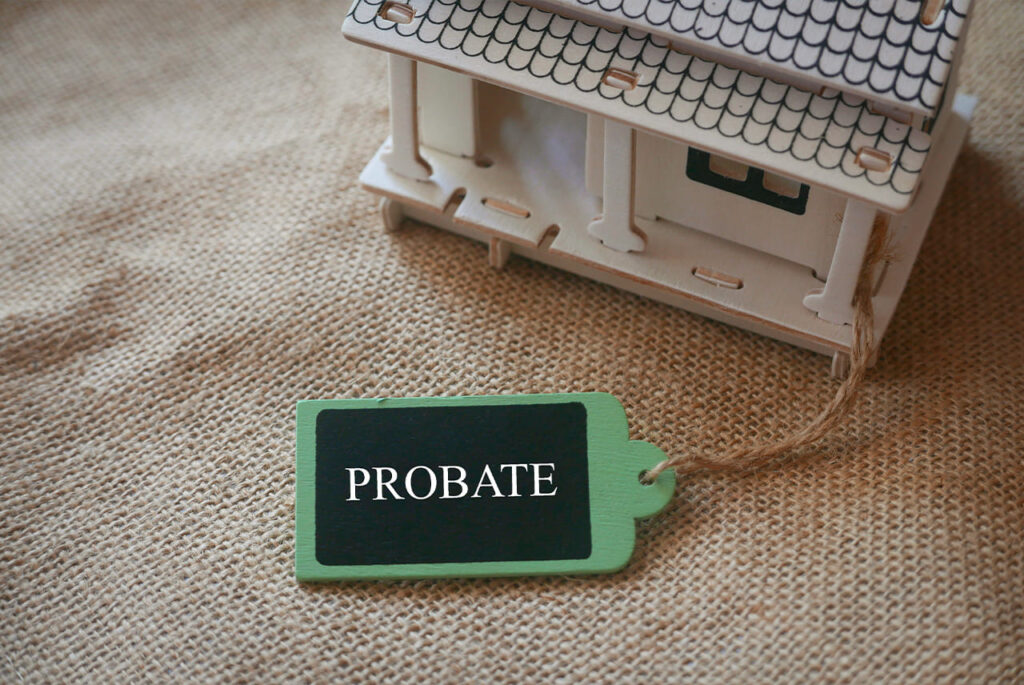The estate tax is a federal tax on the transfer of a deceased person’s assets to their heirs and beneficiaries. However, not all estates are subject to this tax because of the estate tax exemption, which allows a significant portion of an individual’s estate to pass to heirs free of federal tax. While this exemption is currently at a historically high level, it is set to decrease significantly in 2025. In this blog, we’ll explain how the estate tax exemption works, what it means for individuals and families, and what changes to expect after 2025.

What is the Estate Tax Exemption?
The estate tax exemption is the amount of money or assets that an individual can transfer to their heirs without triggering federal estate taxes. Any estate valued above this exemption amount may be subject to a tax rate of up to 40% on the excess. The current estate tax exemption, as of 2024, is $13.61 million per individual, double that per married couple, thanks to provisions in the 2017 Tax Cuts and Jobs Act (TCJA).
Here’s how it works:
- If an estate’s total value is less than the exemption amount, no federal estate tax is due.
- If an estate’s value exceeds the exemption, the portion above the exemption is subject to the federal estate tax.
For example, if a person passes away in 2024 with an estate worth $15 million, the estate would only pay tax on the portion above $13.61 million—in this case, $1.39 million.
The Current High Estate Tax Exemption: A Result of the 2017 Tax Cuts and Jobs Act (TCJA)
The Tax Cuts and Jobs Act, passed in 2017, doubled the estate tax exemption from the previous limit of around $5.49 million to its current level of $13.61 million per individual in 2024 (with adjustments for inflation). This high exemption means that only a very small percentage of estates—approximately 0.1%—are currently subject to federal estate taxes. For many individuals and families, this large exemption has effectively eliminated the need to worry about federal estate taxes.
However, the TCJA’s increase in the exemption amount is temporary. Under the terms of the law, this high exemption will sunset at the end of 2025, meaning it will revert to pre-2018 levels, which were much lower.
What Will Happen in 2025? The Estate Tax Exemption Reduction
On January 1, 2026, the estate tax exemption is scheduled to revert to pre-TCJA levels, approximately $6 million per individual (adjusted for inflation). This reduction means that far more estates will become subject to federal estate taxes than under the current exemption. For example, a couple that could previously transfer nearly $26 million tax-free will only be able to transfer around $12 million without incurring estate taxes after 2025.
To illustrate this more clearly:
Current Exemption (2023):
- Individual: $13.61 million
- Married Couple: $27.22 million
Expected 2026 Exemption:
- Individual: Approximately $6 million
- Married Couple: Approximately $12 million
As a result, many estates that currently avoid federal estate taxes could suddenly become subject to significant tax liabilities after 2025.
Why the 2025 Change Matters for Estate Planning
The reduction in the estate tax exemption scheduled for 2025 creates an urgent need for individuals, especially those with larger estates, to review their estate plans. Here’s why:
1. Larger Estates Will Be Exposed to Estate Taxes
Many individuals whose estates fall between the expected post-2025 exemption of around $6 million and today’s $13.61 million threshold may face a significant tax burden after 2025. For example, if an individual has an estate worth $10 million, that estate will not be subject to tax under current law. However, if the exemption drops to $6 million, then $4 million would be subject to estate tax, potentially creating a liability of over $1 million (assuming a top rate of 40%).
2. Time-Sensitive Gifting Opportunities
Individuals concerned about the reduced exemption may want to take advantage of lifetime gifting strategies while the exemption is still high. The current estate tax law allows for gifting up to the exemption amount without incurring gift tax. If you make large gifts now, while the exemption is high, those transfers can be made tax-free. However, this opportunity may disappear or become less advantageous after the exemption reverts in 2026.
3. Portability of the Estate Tax Exemption
One important estate planning tool is the concept of portability, which allows the unused portion of a deceased spouse’s estate tax exemption to transfer to the surviving spouse. For example, if one spouse dies in 2024 and uses only $5 million of their $13.61 million exemption, the remaining $8.61 million can be transferred to the surviving spouse, effectively giving them an exemption of up to $22.22 million (under current law). After 2025, the reduced exemption will mean that fewer of these large exemptions will be available to transfer.
How to Prepare for the 2025 Estate Tax Exemption Reduction
With the impending drop in the estate tax exemption, it’s essential to evaluate your estate plan and consider strategies to protect your assets and minimize tax liability. Here are some options to consider:
1. Lifetime Gifts
One of the most effective strategies for reducing the size of your taxable estate is to make gifts during your lifetime. You can use your current estate tax exemption to transfer wealth to your heirs without triggering gift taxes. By gifting assets before 2026, you can lock in the current higher exemption levels and reduce the size of your estate.
2. Irrevocable Trusts
Placing assets into an irrevocable trust can also remove them from your taxable estate. These trusts can be designed to benefit future generations while minimizing estate and gift taxes. For example, grantor-retained annuity trusts (GRATs) or charitable remainder trusts (CRTs) are popular tools to move assets out of the estate in a tax-efficient manner.
3. Spousal Lifetime Access Trusts (SLATs)
A Spousal Lifetime Access Trust (SLAT) is a trust that allows one spouse to transfer assets into a trust for the benefit of the other spouse (and sometimes other family members). This allows couples to remove assets from their estate while still allowing access to trust income or principal during the beneficiary spouse’s lifetime.
4. Review and Update Your Estate Plan
If your estate plan was designed when the exemption was lower or based on pre-2018 laws, you may need to update it. Many estate plans include provisions that allocate assets based on the available exemption at the time of death. These formulas may need to be adjusted in light of the scheduled reduction in 2025.
The current estate tax exemption offers a significant opportunity for individuals to transfer wealth without incurring federal estate taxes. However, this opportunity is temporary. When the exemption reverts to lower levels in 2026, many more estates will become subject to the federal estate tax, and tax liabilities could increase dramatically.
If you have a large estate, now is the time to take proactive steps to protect your assets and minimize estate tax exposure. Whether through gifting, trusts, or other estate planning techniques, working with a knowledgeable estate planning attorney can help you navigate the changes ahead and ensure that your estate plan is aligned with the current and future tax landscape.


